- Home
- Paint Good Art
- Learn to Paint
learn how to paint: easy tips to start you painting
Millions of people are painting and you can learn how to paint, too!
Let me share a few simple things to jump start your painting journey.
#1 what do you want to paint?
We do the best job of painting subjects we understand. Start painting the things you see in your environment.
You may want to paint your children, your pets, a tree in the backyard or your favorite fishing hole.
Paint things that are familiar to you.
My parents had a tropical fish business with outdoor ponds. When we fed the fish, they would all swarm around the food. So "Koi Feeding" was a natural for me to paint.
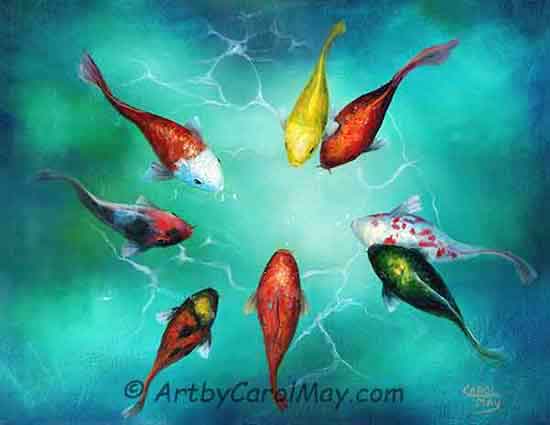 Paint what you know.
Paint what you know.#2 what supplies do you need for painting?
We need three colors of paint, a couple of brushes and something to paint on.
What kind of paint appeals to you?
One type of paint is not better than the others. You may actually try different types of paint to decide which one you prefer.
- Watercolor is an easy paint to use. All it takes is paint, water, paper and two or three bushes. Watercolors on paper require a mat and they are framed under glass for protection.
- Oil paints are also, easy to use. They dry a little slower. You may start oil painting with a couple of brushes, mineral spirits and a canvas. A dried oil painting is easy to frame and it will last for centuries.
- Acrylic paints dry very fast and just like oil paintings, they are simple to frame. The down side is they dry so fast that it's hard to blend the colors. However, a dried acrylic painting is very durable.
Student paints are less expensive for starting out. Artist paints (professional paints) are actually a better buy. They cost more than student paints because they contain more pigment. So, they cover better and produce more intense colors.
what colors do you need to learn painting?
Start out simple. Begin with the primary colors.
- Yellow - Cadmium Yellow Light
- Red - Cadmium Red Medium
- Blue - Ultramarine Blue
You will also need large tube of white for oil and acrylic painting.
Start painting with these colors. Later you may add other colors to your palette, if you desire. Mixing other colors from these three primary colors is easy with a little practice
brushes
- Watercolor brushes; #7 round and a 1" flat, labeled for watercolor
- Oil brushes; #8 and #12 flat bristle brushes, hog hair is good
- Acrylic brushes; synthetic #6 round and a 3/4" flat
Watercolors and acrylic paintings use water. Oil paintings require mineral spirits.
what will you paint on?
Learn how to paint watercolors on watercolor paper. Select your watercolor supplies. Later you may use aquaboard or canvas.
Oil and acrylic painting are normally painted on canvas or panels. There are a variety of supplies for oil painting.
You will also need a palette to lay out your colors for painting.
When you start out, a Styrofoam plate or an old kitchen plate works just fine for a palette. Watercolor washes off the plates. Oils or acrylic on a Styrofoam plate can be trashed after the painting.
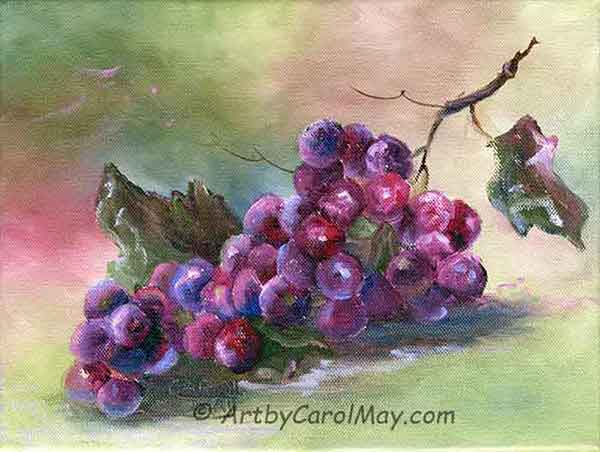 You can learn how to paint!
You can learn how to paint!#3 start painting: we learn by doing
Learning how to paint takes practice.
The step-by-step paintings have the instructions of the painting process. Each step has photos and details of how to do the painting.
Choose some that piques your interest and get started painting.
painting watercolor
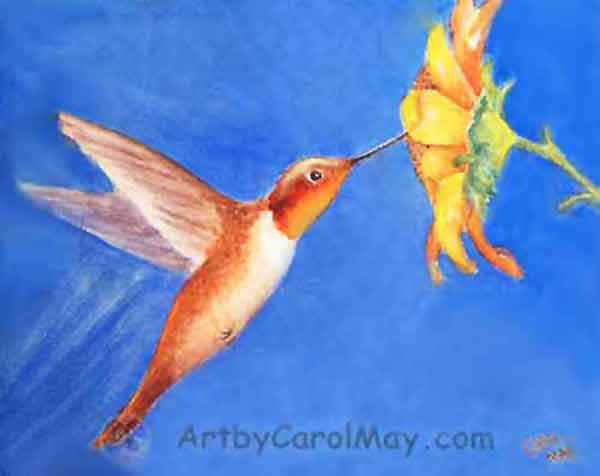 Watercolor for Beginners
Watercolor for BeginnersMany people start learning how to paint with watercolors.
Begin painting watercolor while painting a Rufous hummingbird visiting a yellow flower.
First there is a discussion about the basics of watercolor. Then, follow the easy steps and learn how to paint watercolor.
In this beginners' tutorial you will learn what colors to use, the suggested brushes, what you can paint watercolor on, how to keep your colors clean and more.
This painting is done with only 3 colors; yellow, orange and blue.
do you want to start oil painting?
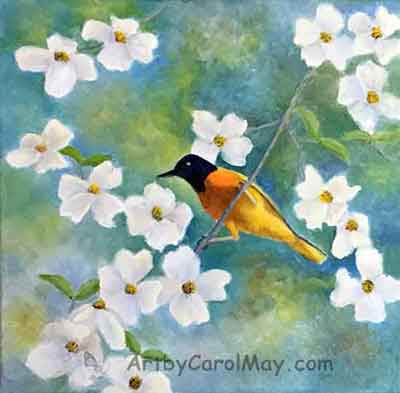 How to Oil Paint tutorial
How to Oil Paint tutorial
You may begin oil painting with this colorful Oriole and Dogwood flowers.
The Oriole was not actually in the Dogwood trees. So, two separate photographs were combined to make this nature painting.
The tutorial includes:
- The color scheme, suggested brushes and colors
- What is the best paint?
- Recommended solvent for the studio
- How to clean oil painting brushes
Full explanations of the painting steps are included.
How to Oil Paint gives additional detailed answers to frequently asked questions about using oil paints.
How do we create a good painting
All art paintings use the same design elements of art. These elements are indispensable to the painting artist.
They are easy to learn and essential while you learn how to paint. Take the time to learn the basic elements and use them in all your paintings. These elements are the foundation of all successful paintings.
focal point
Create a focal point or focal area to draw people into your paintings.
#4 practice to learn how to paint
Painting on a regular basis will put your learning into overdrive! Include painting in your schedule.
No matter whether you paint daily, weekly or monthly - paint regularly.
If we were learning how to play the piano, we would most likely practice daily. The same goes for painting. The more we paint, the faster we learn.
Many professional artists paint daily.
#5 share your artwork with others
Get feedback from your friends, family and other artists.
Join your local art association. Paint with other artists. Go to painting classes and art shows.
Seeing other's artwork and sharing your art will encourage you. It will stimulate you with new ideas. Plus, it's just fun to share.
popular painting tutorials
Learn how to paint with the practice painting tutorials.
There are pictures throughout the process of each painting. Each step is fully explained. Paint the step-by-step tutorials.
Then use the same methods to create your own individual artwork.
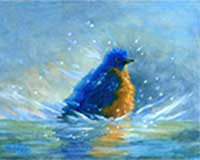
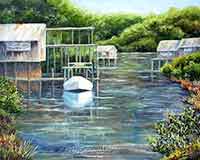
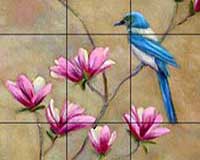
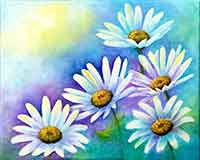
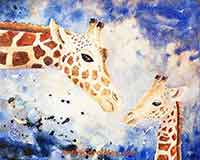
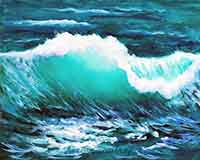
 Unlock your creativity and start painting butterfly art. Discover the techniques of painting realistic butterflies. Link to 5 different pages on how to paint butterflies with tips and valuable insight…
Unlock your creativity and start painting butterfly art. Discover the techniques of painting realistic butterflies. Link to 5 different pages on how to paint butterflies with tips and valuable insight…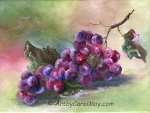 Learning to paint is fun! Millions of people are painting and you can too!
Use these five easy things to jump start your painting journey.
Learning to paint is fun! Millions of people are painting and you can too!
Use these five easy things to jump start your painting journey.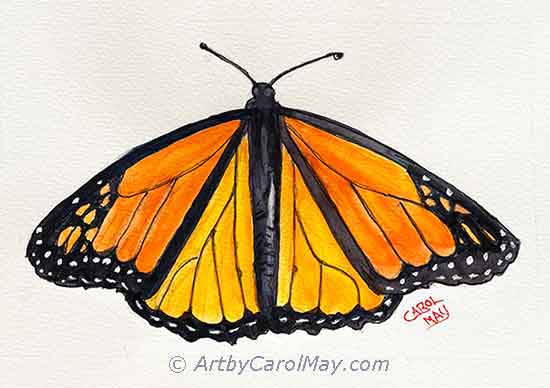
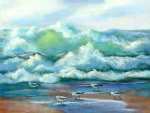 How to survive an artist's block. All artists can have blocks or delays, but we get over it.
What is an art block? How do we get started painting again?
How to survive an artist's block. All artists can have blocks or delays, but we get over it.
What is an art block? How do we get started painting again?